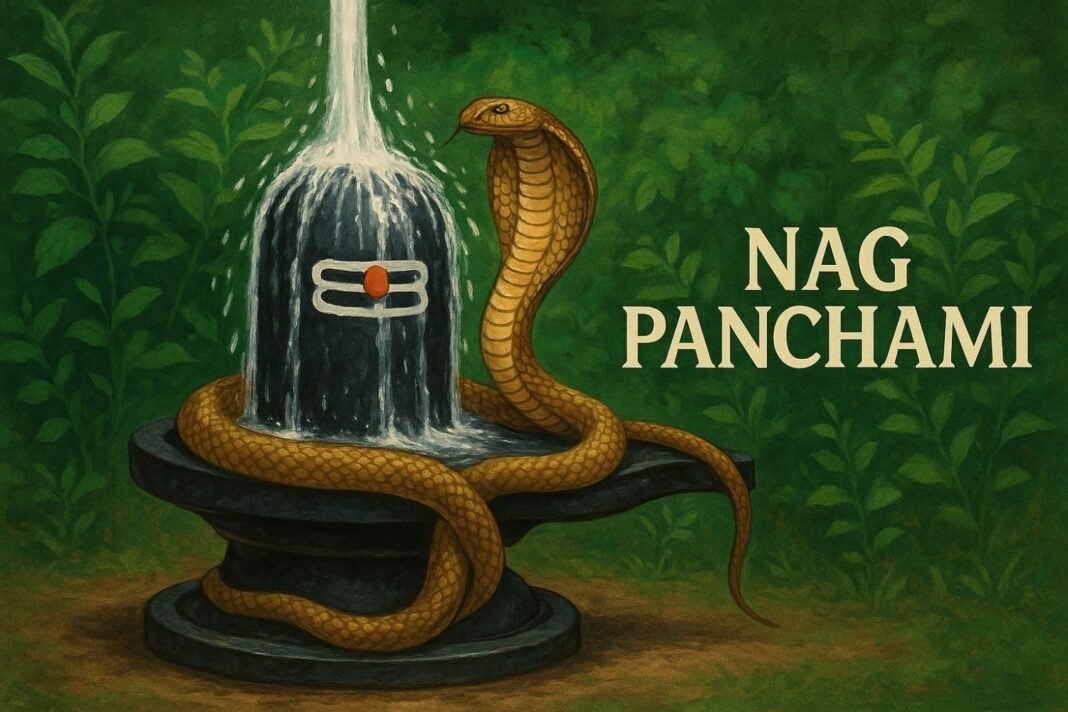Nag Panchami, a significant Hindu festival dedicated to the worship of serpents, will be celebrated on Tuesday, July 29, 2025, during the sacred month of Sawan. Falling two days after Hariyali Teej, this festival holds deep cultural and spiritual value, especially in northern and western parts of India. On this day, devotees pay homage to Nag Devta, or serpent gods, seeking protection, prosperity, and harmony in their families.
According to Hindu beliefs, Shukla Paksha Panchami in the month of Shravan (Sawan) is regarded as highly auspicious to honor the serpent deities. In 2025, although the Panchami Tithi begins on the night of July 28, the main celebrations will take place the following morning, on July 29, aligning with the traditions of early-morning worship.
Shubh Muhurat and Panchami Tithi Timing
This year, there has been some confusion about the correct date due to the overlapping of Tithi timings. However, religious calendars including Drik Panchang confirm that the Panchami Tithi will begin at 11:24 PM on July 28 and end at 12:46 AM on July 30. The most auspicious time for performing the Nag Panchami Puja falls between 5:41 AM and 8:23 AM on July 29, providing a 2-hour and 43-minute window for the rituals.
Additional muhurats for the day include:
-
Brahma Muhurta: 4:17 AM to 4:59 AM
-
Abhijit Muhurta: 12:00 PM to 12:55 PM
-
Vijaya Muhurta: 2:43 PM to 3:37 PM
The sunrise is expected at 5:41 AM and sunset at 7:14 PM, with the moonrise at 9:50 AM, marking ideal conditions for conducting the puja.
Rituals and Puja Vidhi
On the morning of Nag Panchami, devotees traditionally take a holy bath and dress in clean, preferably traditional attire. A red cloth is spread over a wooden platform, where an idol or image of Nag Devta is placed. Worshippers then offer milk, turmeric, vermilion (roli), raw rice (akshat), flowers, and sweets. Some also pour milk into snake holes or near anthills, a practice rooted in ancient customs that symbolize reverence toward nature and its creatures.
Chanting of specific mantras, listening to or reciting the Nag Panchami Katha (story), and making donations to Brahmins or the needy are integral parts of the puja. Women, in particular, observe the day with devotion, praying for the well-being of their brothers and the overall prosperity of their households.
Cultural and Religious Significance
Nag Panchami is more than just a ritualistic festival—it represents the harmonious relationship between humans and nature. In Hindu mythology, serpents are believed to reside in the netherworld (Patal Lok) and are closely associated with various deities, including Lord Shiva and Lord Vishnu. Serpent worship during this time is believed to ward off evil influences, snakebites, and other misfortunes. It is also said to nullify Kal Sarp Dosh, a planetary condition in astrology.
The festival holds special relevance during Sawan, a month deeply connected with water, fertility, and the natural elements. Worshipping snake gods during this period is thought to bring peace, wealth, and happiness into one’s home.
Unique Coincidence: Mangala Gauri Vrat on the Same Day
Interestingly, in 2025, Mangala Gauri Vrat, another auspicious observance for married women, also falls on the same day as Nag Panchami. This rare combination is considered extremely fruitful, especially for those seeking marital harmony and blessings for a happy family life.
As temples gear up for special events and rituals, and devotees prepare offerings and prayers, Nag Panchami 2025 promises to be a spiritually enriching occasion for millions. Whether performed at home or in temples, the festival is a vivid reminder of the deep-rooted Indian tradition of honoring all forms of life—even those as feared and revered as snakes.








